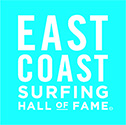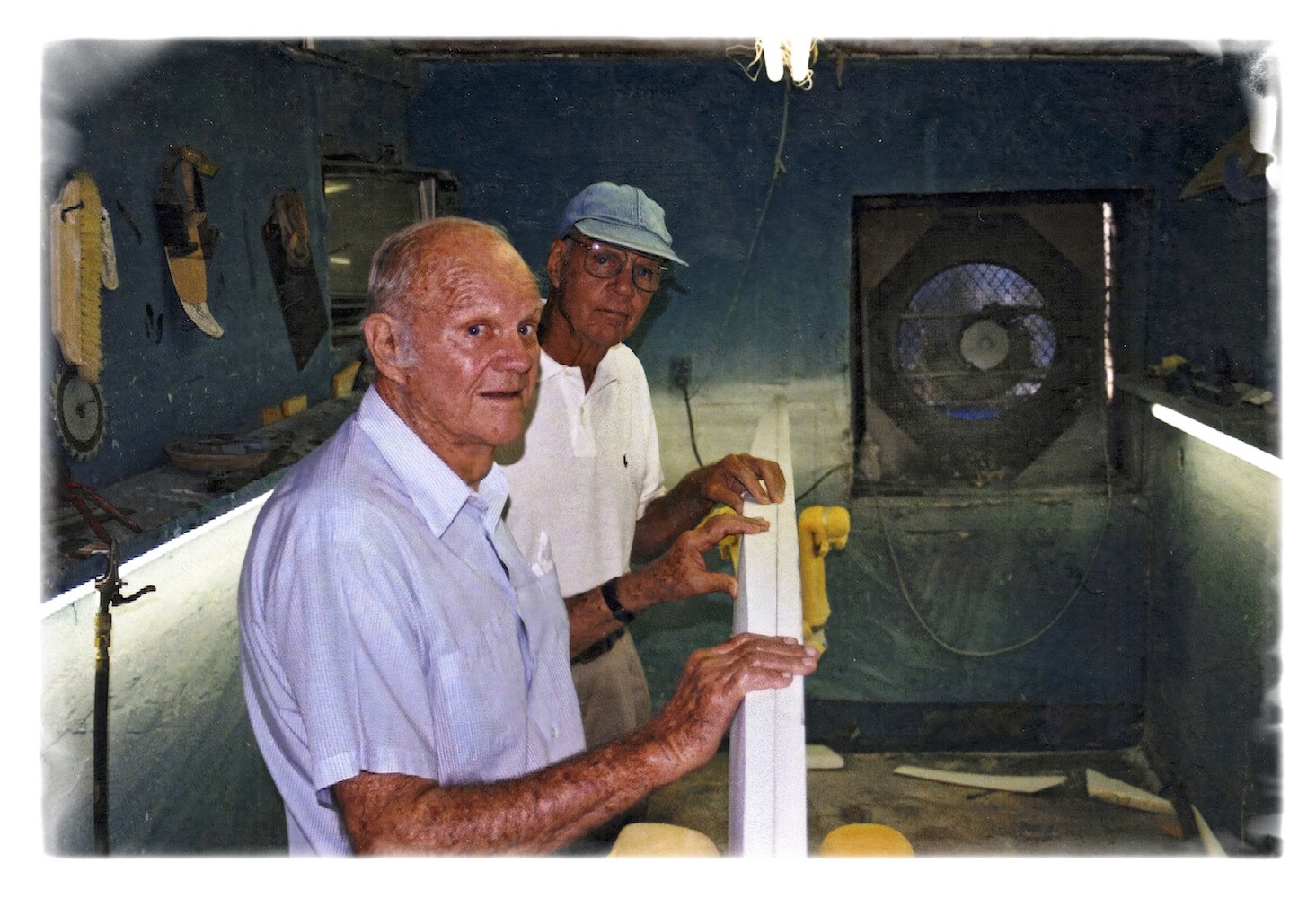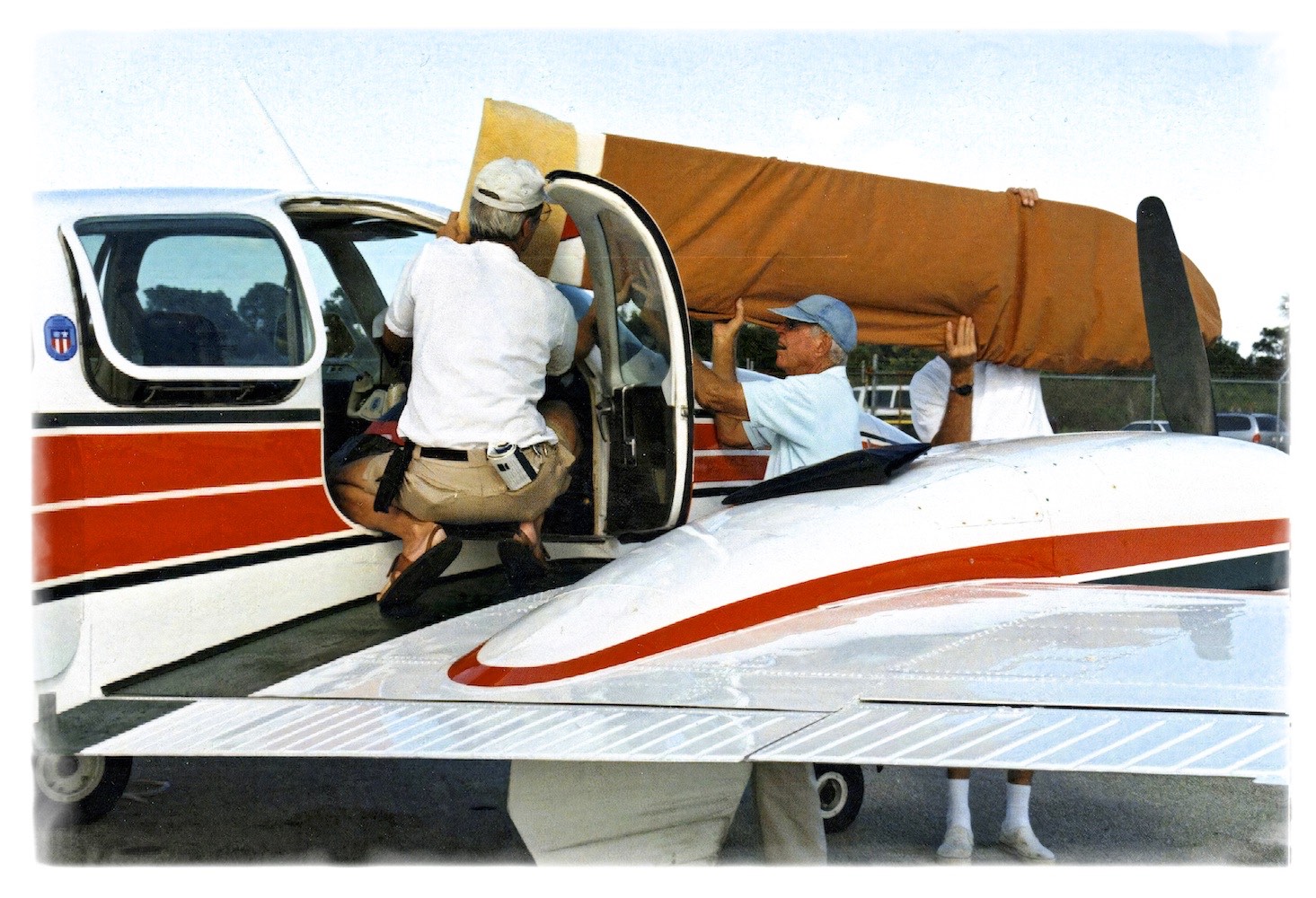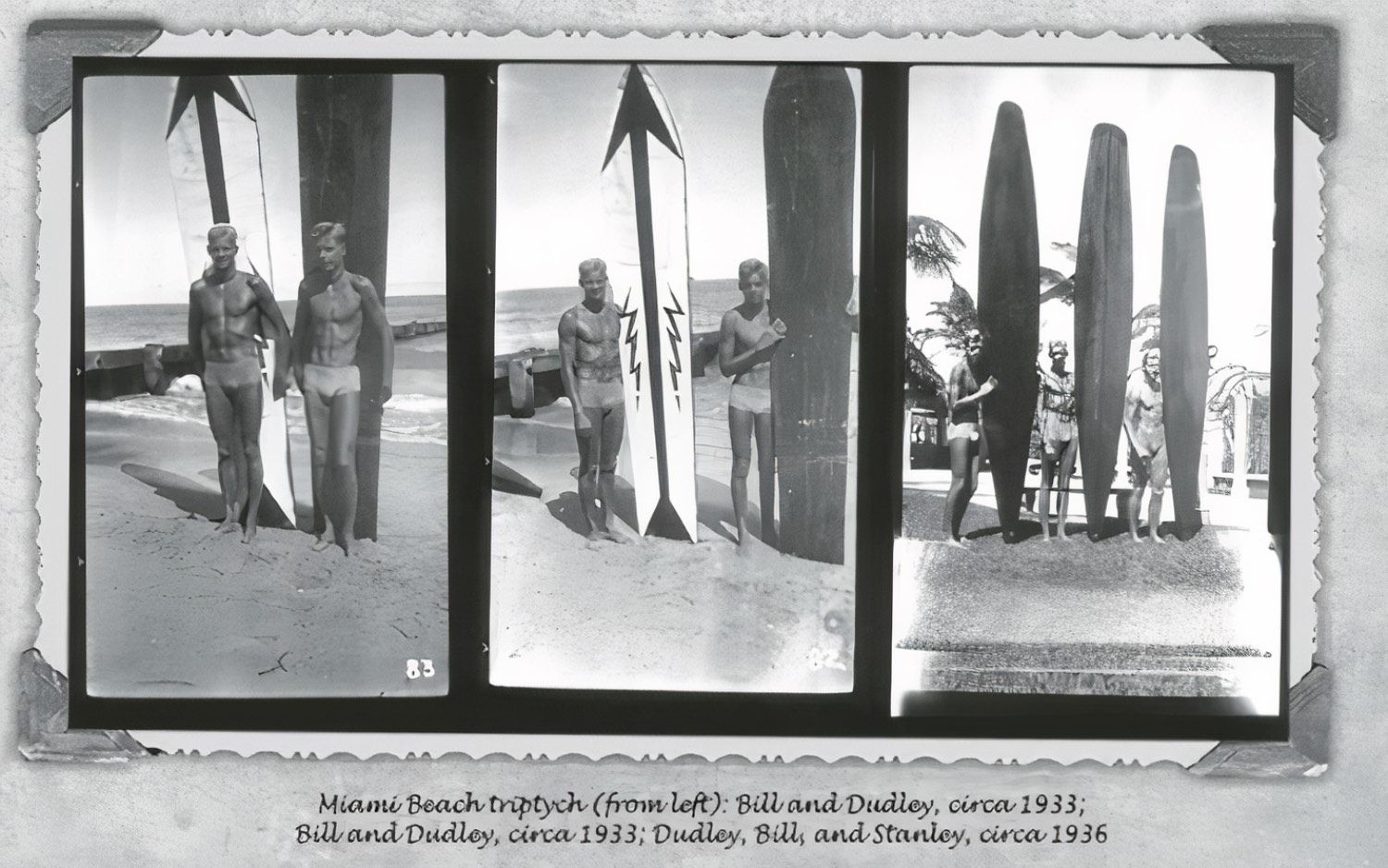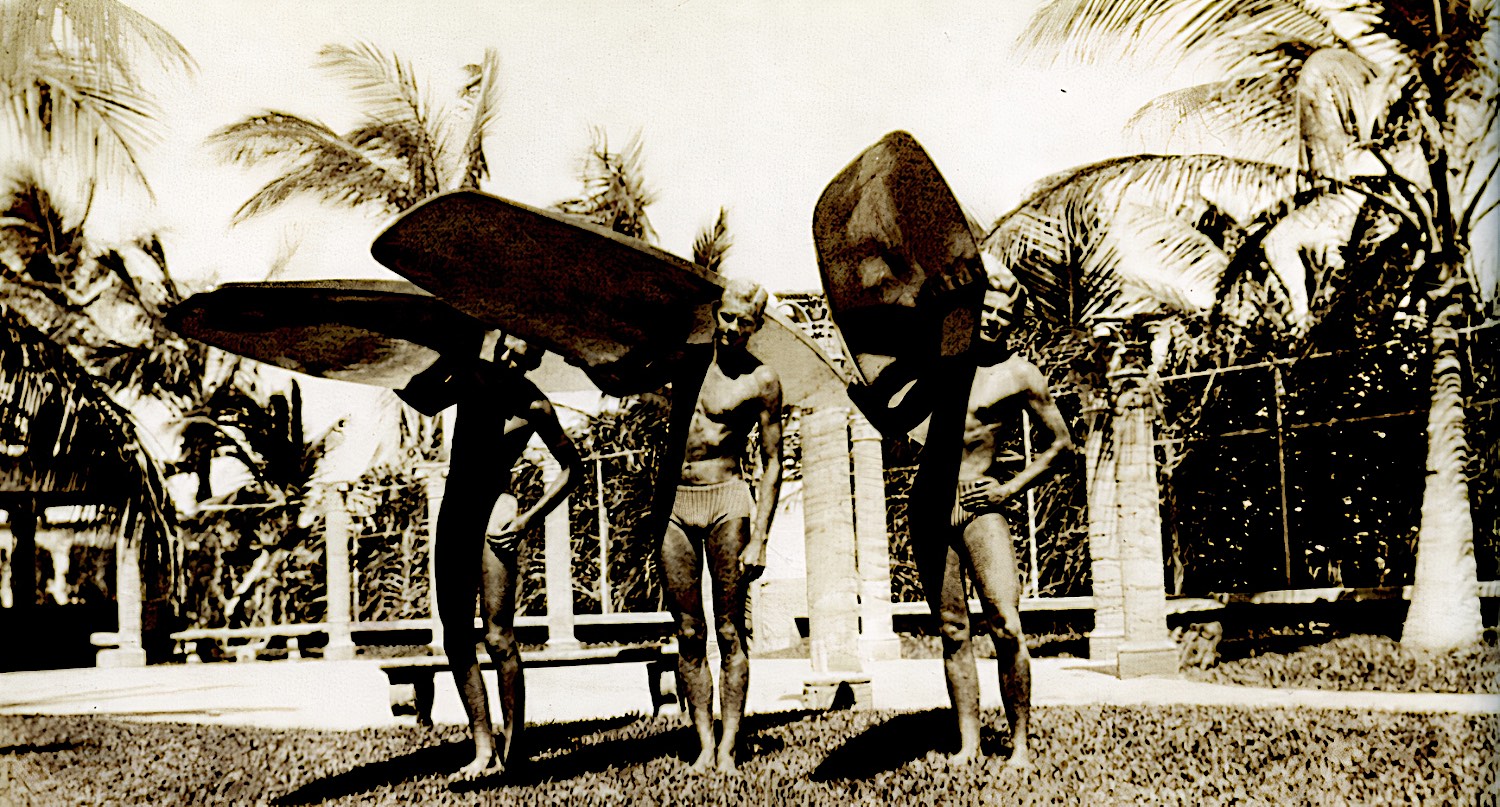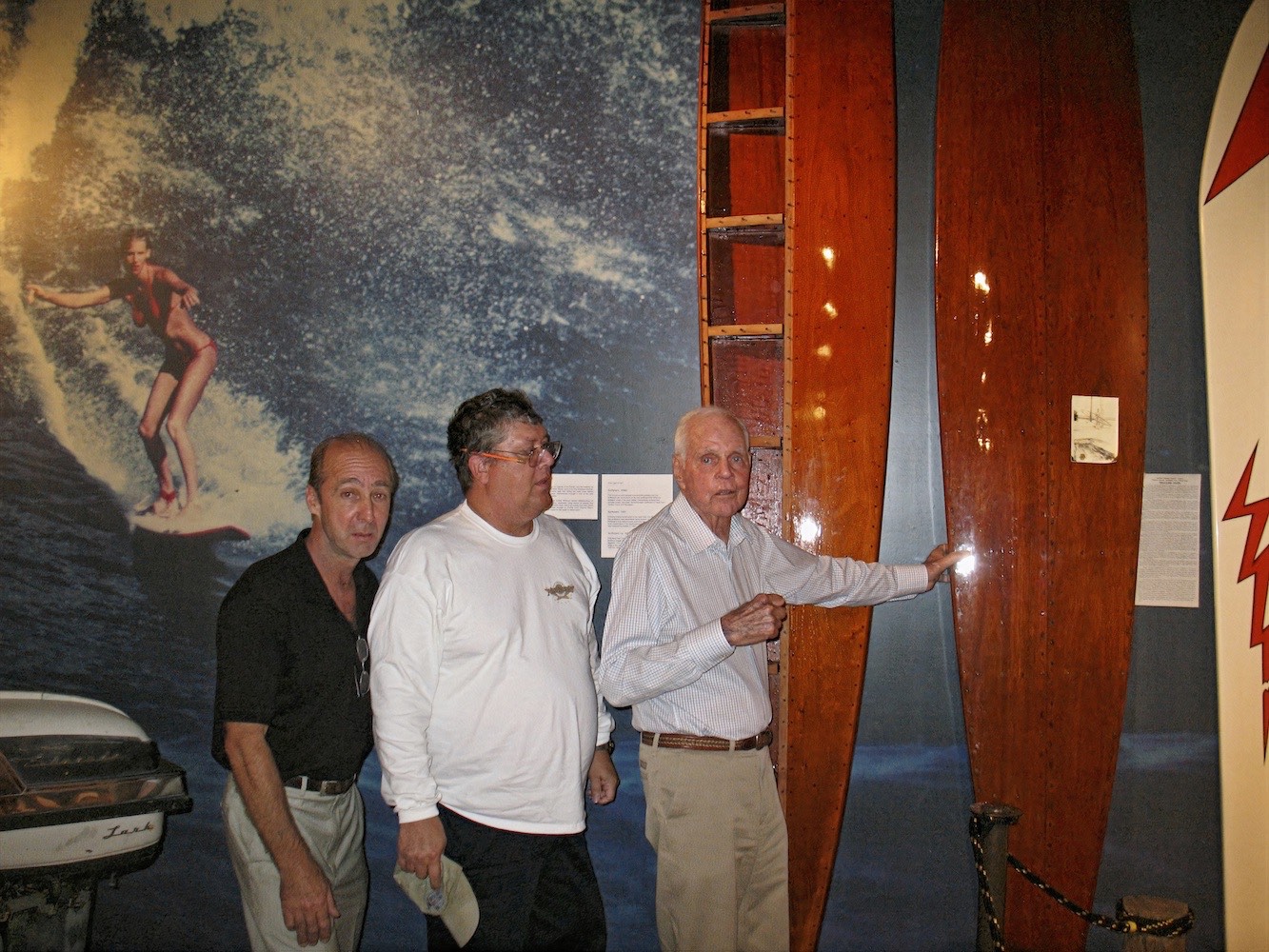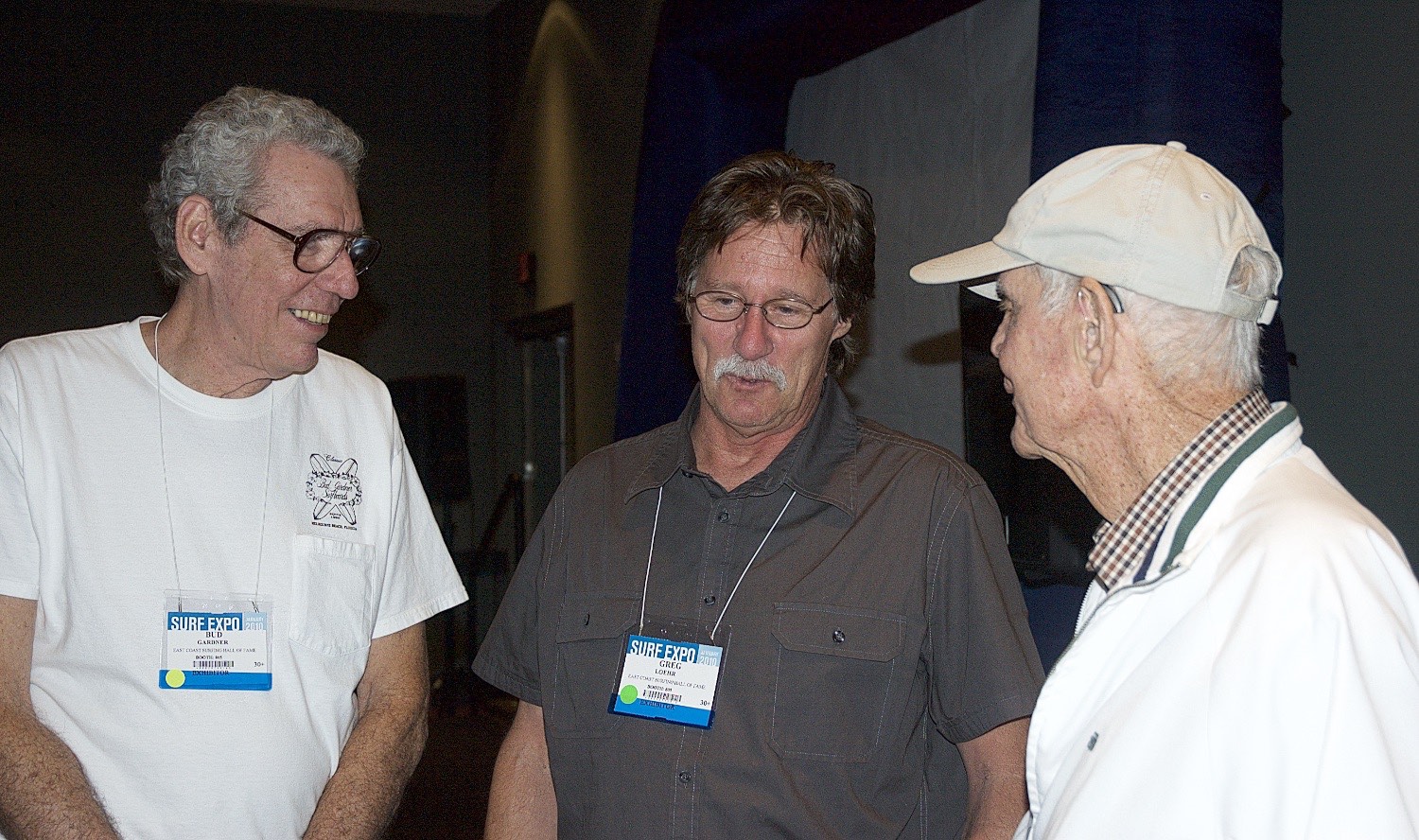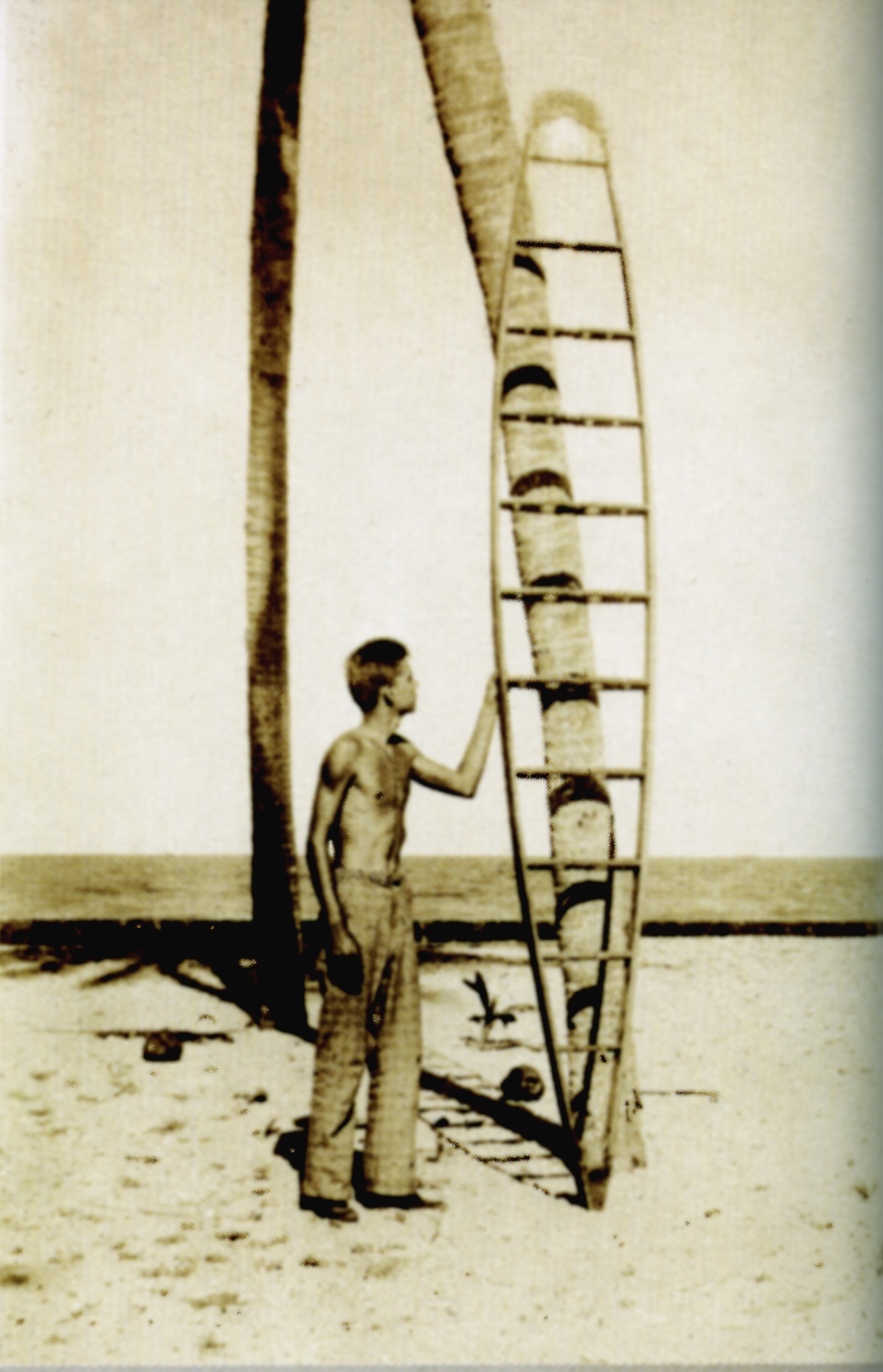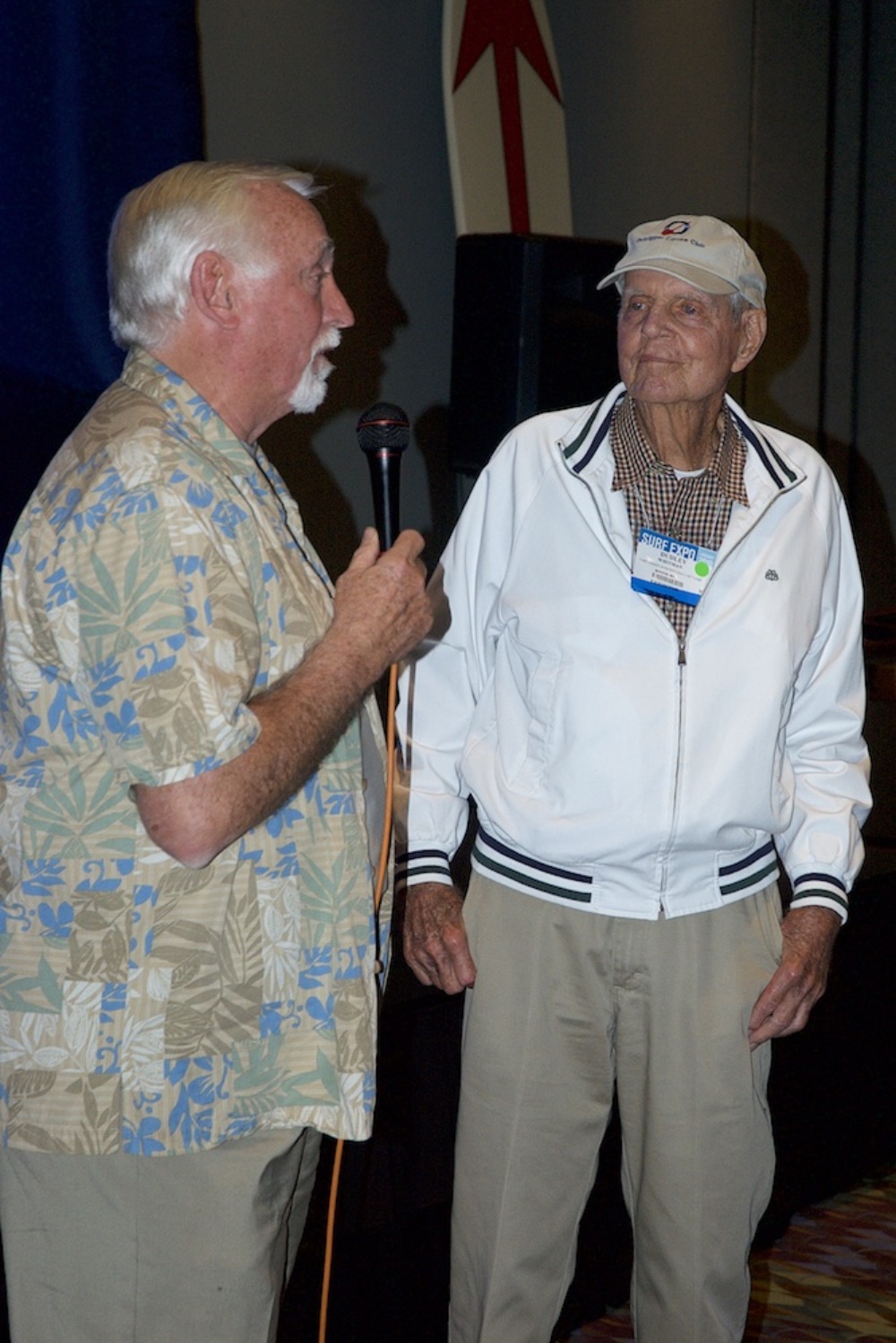Dudley Whitman*
Splitting their adolescent years in the 1920s and ’30s between Miami Beach and Lake Michigan, Dudley Whitman and his brothers William and Stanley became acquainted with watersports at an early age. They learned to bodysurf and bellyboard, catching lake and ocean waves on mats and boards handmade by William himself. For William and Dudley in particular, an auspicious visit from a trio of Virginians changed the direction of their lives.
John Smith, Dusty Hinnant, and “Babe” Braithwaite had begun an annual surfing trip down the Eastern Seaboard in 1930, bringing their 10-foot Hawaiian-style board along to ride waves throughout North Carolina and Florida. It was in 1932 when the Whitmans first encountered the group on the water — and saw for the first time someone surfing waves while standing up. The novel technique and unique board style were inspiring to William, who — after graciously accepting an invitation to ride a few waves — started pursuing the new form of waveriding.
Working in his father’s woodshop in 1932, William made what is thought to be the first surfboard crafted in Florida — a 10-foot plank of white-painted sugar pine, emblazoned with a red lightning bolt and weighing in at 87 pounds. Inspiration struck again later that year while Dudley was in the shop putting the finishing touches on a redwood board of his own. The brothers spotted Tom Blake and his hollow board out on the waves at Miami Beach. The two proved fast friends with Blake, who stayed with the Whitmans when his surfing travels brought him through Florida.
Before long, William and Dudley were building hollow boards as well, using plans from Blake’s 1937 “Riding the Breakers” feature in Popular Mechanics and making improvements along the way — wooden dowels in place of screws for better design versatility and a drainage system to release the water that early hollow boards inevitably took on. The summer of 1937 saw the brothers slinging their boards atop their convertible and making for Los Angeles, where they surfed the West Coast’s waves with Tom Blake for a week before hopping a ferry to Hawaii and wowing the locals with their beautiful, innovative boards.
After William served in World War II, he and Dudley embarked on a new career in filmmaking, specializing in waterskiing and underwater photography — and earning a patent for an inventive submersible camera in 1948. Paramount released the Whitmans’ Riding the Waves and Five Fathoms of Fun in 1947, but the brothers’ biggest accomplishment came after shooting The Sea Around Us in Tahiti, which won the Academy Award for Best Documentary Feature in 1953.
The family tradition of surfing rolled on to the next generation of Whitmans, with William’s son, Chris, winning the Hawaii Championship at the age of eight, and Dudley’s daughter, Renee, taking honors at the very first East Coast Surfing Championship in 1963. Both William and Dudley Whitman were inducted into the East Coast Surfing Hall of Fame in 1998 for their work as surfing pioneers.
Photos by Joe McGovern and courtesy Whitman Family
